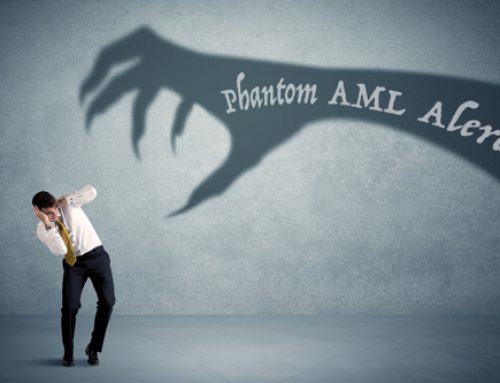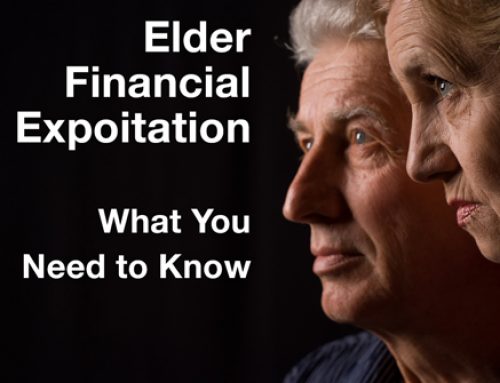 The 2015 National Terrorist Financing Risk Assessment is an unprecedented report based on an analysis of more than 5,000 law enforcement cases, reporting by U.S. financial institutions, and reports from both the government and the private sector. The findings divulge that although U.S. wealth and resources are an attractive target for a wide variety of terrorists, advances have been made in hindering terrorist organizations from raising money, which has decreased terrorist-financing-related transactions in the U.S. This is good news, but it means that terrorists are forced into other methods to facilitate terrorist financing, such as cash smuggling. As the terrorist financing threat continues to mutate, what exactly should your organization learn from this novel risk assessment?
The 2015 National Terrorist Financing Risk Assessment is an unprecedented report based on an analysis of more than 5,000 law enforcement cases, reporting by U.S. financial institutions, and reports from both the government and the private sector. The findings divulge that although U.S. wealth and resources are an attractive target for a wide variety of terrorists, advances have been made in hindering terrorist organizations from raising money, which has decreased terrorist-financing-related transactions in the U.S. This is good news, but it means that terrorists are forced into other methods to facilitate terrorist financing, such as cash smuggling. As the terrorist financing threat continues to mutate, what exactly should your organization learn from this novel risk assessment?
Although this document is largely an exploration of the threats faced from terrorist financing in the U.S. as well as the country’s response, it also contains information on trends identified with links to terrorist financing, which is valuable information to financial institutions.
Here are five emerging trends relative to terrorist financing described in the Risk Assessment:
Misuse of Charitable Organizations
This is the use of the U.S.’s large and diverse charitable sector to raise funds for terrorist groups. This can involve using recognized charitable organizations within the U.S. to collect and transmit funds to terrorist groups. The analysis for the Risk Assessment found that fundraising through charitable organizations accounted for 20 percent of the overall observed methods of fundraising for terrorist groups. This phenomenon most often involves charitable organizations operating abroad or with overseas branches, particularly in high-risk areas.
So, what can your institution do to be sure proper controls are in place against the misuse of charitable organizations? Strong customer or member identification programs as well as due diligence efforts need to be in place to identify charitable organizations, and to understand what types of transactions will be conducted, including where the funds come from and where they are going.
Area to Double Check
- Verify that strong CIP/MIP, CDD/MDD, and EDD are in place to identify charitable organizations and to provide an understanding of the types of transactions they will be conducting, including where the funds come from and where they are going
Individuals Raising Funds Under the Auspices of Charitable Giving
This emerging trend has some similarities to the first, and focuses on people who send funds under the guise of charitable giving while the movement of funds is outside any charitable organization recognized by the U.S. government. These individuals try to avoid the oversight and reporting associated with formal charitable organizations by soliciting funds for charity, but then divert the proceeds to terrorist groups. This type of activity often has an online presence through social media and makes use of personal accounts or informal channels.
What can be done to combat this trend? Monitoring for activity moving to high-risk areas is one way, and so is monitoring for money coming in from a variety of sources but sent to a single place on a recurring basis.
Areas to Double Check
- Monitoring for activity moving to high-risk areas
- Money coming in from a variety of sources but sent to a single place on a recurring basis
Correspondent Banking Relationships with Foreign Financial Institutions
Some correspondent banking relationships are inherently higher-risk due to “intermediation,” where multiple intermediary financial institutions may be involved in a single funds transfer transaction. When coupled with the varying record keeping requirements for funds transfer systems in other countries, the risks of terrorist financing mount.
An effective way to monitor for this includes policies and controls related to monitoring transactions involving correspondent banking relationships.
Area to Double Check
- Policies and controls related to monitoring transactions involving correspondent banking relationships
Licensed MSBs
Individuals seeking to support terrorism tend to prefer the use of licensed MSBs and unlicensed money transmitters over banks as a point of entry in the banking system. Individuals raising money for terrorist financing under the guise of charity have used MSBs to transfer money to terrorist organizations. Movement of funds through licensed MSBs represented 17% of the observed funds transfers involved with terrorist financing.
Areas to Double Check
- Policies to ensure MSBs are licensed and have their own monitoring in place (including independent reviews)
- Monitoring in place within the Bank to understand the transactions conducted by the MSBs
Unlicensed Money Transmitters
Movement of funds by individuals or entities acting as unlicensed money transmitters represented 18% of the observed funds transfers involved with terrorist financing.
Areas to Double Check
- FinCEN Advisory 33 provides a description of specific transactional activities that are potentially indicative of an unlicensed money transmitter. These include but are not limited to:
- Sudden and/or unexplained cash deposits where the entity previously had few such deposits
- Large and/or mixed deposits of cash and monetary instruments
- Frequent large cash shipments in amounts and volumes beyond what is normal the entity’s business operation
- Structured cash deposits followed by international wire transfers
- Structured cash purchases of monetary instruments made payable to the same individual or entity
Check out the full text of the National Terrorist Financing Risk Assessment.




